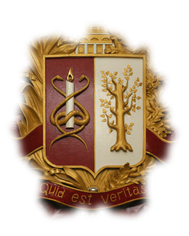Issue: 2025, Vol. 30, No. 2
CORRECTION OF EQUINUS FEET DEFORMITY WHILE TREATING CONGENITAL CLUBFOOT BY THE PONSETI METHOD
- Keywords
- congenital clubfoot, Ponseti method, Achilles tendon regeneration, effectiveness of Ponseti method
- Abstarct
- Objective – to study the treatment results of congenital clubfoot (CC) using the Ponseti method depending on the degree of damage to the peritenon at its transverse crossing. Material and Methods. 159 children (241 feet) with the typical form of CC were treated at the University Clinic of the Privolzhsky Research Medical University from 2012 to 2021 strictly according to the protocol of the Ponseti method. A rating system to assess the long-term functional results of CC treatment was used, the sum of 100 points on the Laaveg - Ponseti scale being considered for a normal foot. The reparative regeneration completeness of the Achilles tendon (AT) in 27 children (42 tendons) was analysed taking into account the ultrasonographic examination data a year after the surgical intervention. Results and Discussion. The treatment efficacy score by the Laaveg - Ponseti scale was 93.44 ± 2.17 in 51.4 % of cases (77 children, 111 feet) and considered to be favourable. The findings 82.50 ± 4.70 points in 17.6 % of cases (24 patients, 38 feet) were found successful; 64.81 ± 7.04 points in 15.3% of cases (22 children, 33 feet) were satisfactory, while 42.38 ± 3.14 points in 15.7% (23 children, 34 feet) showed unsatisfactory treatment result. The peritenon was damaged in 69% of cases (29 tendons in 19 patients) when performing tenotomy of AT according to the Ponseti method. The processes of reparative regeneration proceeded under unfavourable conditions, the tenotomy zone being filled with a tissue different in its structure from the parental tendon one. No peritenon damage during transverse Achillotomy by the Ponseti method occurred only in 31% of cases (13 tendons in 8 patients). In this case, the reconstructed tendon tissue bore a strong resemblance to the original tendon tissue. Conclusion. The degree of AT peritenon damage after transverse tenotomy affected the completeness of its morphological recovery. Damages to the peritenon are to avoid when performing achillotomy by the Ponseti method.

